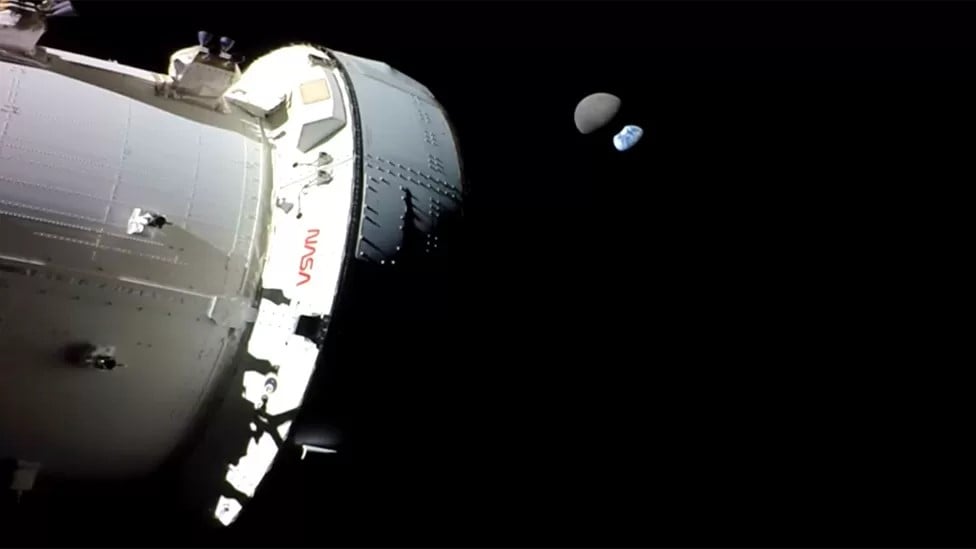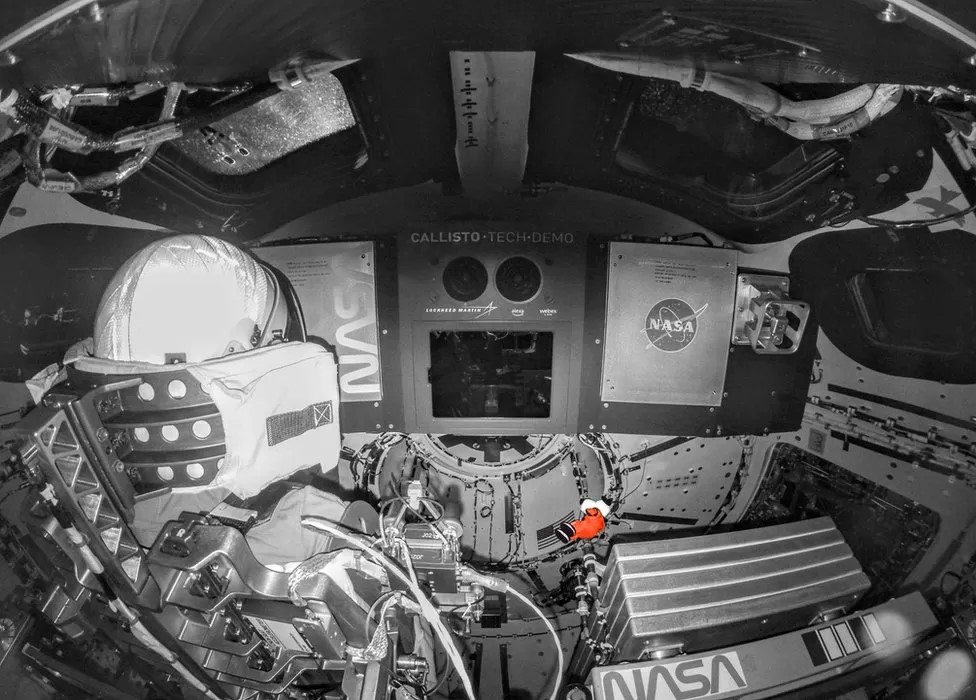
NASA’s Artemis 1 moon mission Orion spacecraft broke a new record when it reached the furthest distance from earth ever traveled by a spacecraft designed to carry humans.
The milestone was recorded Monday the 28th as the unmanned capsule reached a distance of circa 270,000 miles (434,523 kilometers) from earth.
According to the US Space Agency, the capsule launched from Florida’s Kennedy Space Center on 16 November, has traveled more than 40,000 miles (64,374 kilometers) beyond the far side of the moon.
The previous record was set during the Apollo 13 mission fifty years ago. At that time, it journeyed 248,655 miles (400,171 kilometers) from our planet, although its crew fought to navigate their way home following an explosion in their capsule’s service module.
Unlike the recent Artemis 1 mission, the Apollo 13 had humans on board who made history as taking the first humans to land on the moon.
The goal of the Artemis 1 mission is to test the Orion capsule to its limits in order to ensure that it is ready to safely carry humans. To that end, the trial run is part of NASA’s broader Artemis program aiming to return astronauts to the lunar surface.
NASA indicated that if the unmanned spacecraft completes the current flight without any incidents, astronauts will be on the next outing in two years’ time.
Orion reaches record for distance mid-way through its mission
The space agency said Orion made the record on Monday when it arrived at the middle point of its mission.
Mike Sarafin, NASA’s Artemis mission manager stated, “This halfway point teaches us to number our days so that we can get a heart of wisdom. The halfway point affords us an opportunity to step back and then look at what our margins are and where we could be a little smarter to buy down risk and understand the spacecraft’s performance for crewed flight on the very next mission.”
Just before attaining that achievement, Orion had been streaming back some spectacular videos of its journey and had recently captured the Moon moving in front of the Earth as well.
Orion is being pushed through space by a service module provided by the European Space Agency (ESA) that incorporates the big thrusters needed to make maneuvers.
The ESA module delivered two key engine burns last week to get the space craft into a big loop around the Moon known as a Distant Retrograde Orbit.
It’s called “distant” because the path took Orion a long way from the Moon’s surface (61,000km; 38,000 miles) and “retrograde” because it sends the capsule in the opposite direction to the lunar body’s direction of travel.
The capsule is now expected to swoop back toward the moon before firing its engines on Thursday to exit its current trajectory and head back to Earth.
Its return will require two further maneuvers in the coming days to put the capsule on the correct trajectory to come home. Once done, it will splash down in the Pacific Ocean off the coast of California on December 11th, where a NASA recovery ship will be waiting nearby to haul the capsule to safety.

NASA delighted with Orion’s performance
According to Orion Program Manager Howard Hu, the overall performance of the unmanned Orion spacecraft has been “outstanding.”
He noted that the spacecraft is outperforming expectations in some respects, such as producing about twenty percent more power than it really needs, an indication that it has been very frugal with its energy consumption.
Mr. Sarafin nevertheless said that there have been some small technical issues, but “none of the anomalies, or funnies, that are out there are of consequence”.
NASA administrator Bill Nelson also affirmed that, “Not only are we going farther and coming home faster, but Artemis is paving the way to live and work in deep space in a hostile environment, to invent, to create, and ultimately to go on with humans to Mars.”
On board Orion, there is one of the manikins which has been dubbed Commander Moonikin Campos in honor of Arturo Campos, a NASA engineer who played a critical role in helping to get the troubled Apollo 13 back.
According to NASA, if the Artemis 1 is successful, the first crewed mission could take off as soon as 2024. The flight that would also bring astronauts to the lunar surface could occur as early as 2025 or 2026.
See all the latest news from Greece and the world at Greekreporter.com. Contact our newsroom to report an update or send your story, photos and videos. Follow GR on Google News and subscribe here to our daily email!



